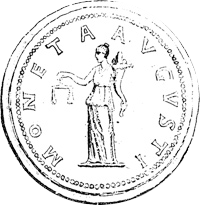





Irene, 797-802. Semissis. Syracuse. After AD 797 (Gold, 18.41 mm, 1.86 g). [E]IR[Ih] - [bASIL]IS[..], Facing bust of Irene, holding globus cruciger, wearing loros and crown with pendilia, cross on semicircle and two triangular pinnacles; on left field, C. Rev [EIRIh] - bASIL[IS], Facing bust of Irene, holding globus cruciger, wearing loros and crown with pendilia, cross on semicircle and two triangular pinnacles; on left field I. DO -. Spahr -. Sear -. Anastasi -. Sharp details. Light deposits. About Extremely Fine. Unpublished and possibly Unique.
This previously unknown semissis introduces a new denomination alongside an original typology. While the iconography echoes that of the solidus (cf. Anastasi 455), key differences—such as the separation of the letters C and I (Σικελία) across obverse and reverse, and the absence of the cruciform scepter—mark it as distinct. The coin was struck after 797 at the Syracuse mint, following Empress Irene’s brutal consolidation of power, when she deposed and blinded her own son Constantine VI. One of only two types to depict Irene on both sides, this issue boldly asserts her role as sole ruler. Irene’s reign (797–802) was short but historically charged: she was a contemporary of Charlemagne, whose imperial coronation in Rome in 800 directly challenged her authority. Deposed in 802 by her finance minister Nicephorus, Irene died soon after in exile on the island of Lesbos.


